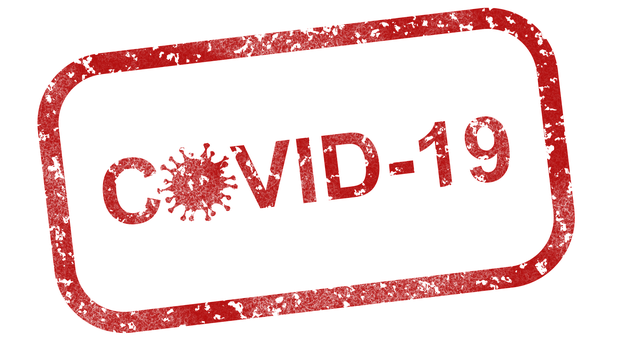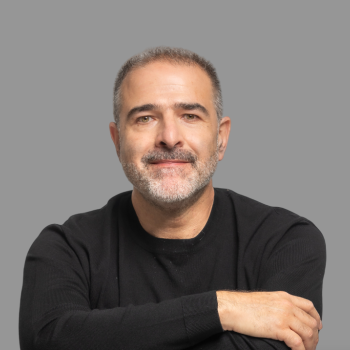I arrive at the room of the second patient on my list. I don’t have to put on any extra equipment for this one, just the ‘ordinary’ mask and gloves as they have no COVID-19 warnings. Entering the room, again I introduce myself and ask how I can assist them during their stay in the hospital.
The elderly patient looks up at me and says “I don’t go to church, in fact I don’t really believe at all in God, a higher power or anything like that. I just want someone to talk to. I’m alone.” For the next 25 minutes they tell me their life story. Where they lived, what they did in their career, how they find peace and comfort. I listen and then help them find that place of peace once again.
I ask if they would like a blessing or prayer and then leave the room, find a place to sit for a few minutes and quickly scribble some notes. My phone rings and a nurse asks me to come immediately as they are preparing for a patient to pass and family has decided that a priest is needed.
Another COVID Room
I arrive at the room, a COVID-19 room again. I call the family and explain who I am and my role at the hospital. They request the Catholic Sacrament of Anointing of the Sick. Unfortunately no priest is available and offer alternatives that are available.
The family express their anger at the virus, their frustration with the “no-visitor” restrictions and their outrage at not having a priest at bedside as their loved one crosses from this world to God’s. I find out which parish they attend and if there are any saints they hold closely to.
I assure the family that once in the room, I will call them on either Zoom, Face Time or speaker phone so they can pray along with me. Then again I begin the dance of dressing to go in again. After I put on my protective helmet, I take out my vial of Holy Water and my prayerbook that has the Rite of The Commendation of the Dying in it.

Helping A Family Say Goodbye
I know most of this by heart and really don’t need the book. The book was brand new 9 months ago but has been wiped with bleach wipes so often that the gold leaf words are gone, the pages crinkled from the moisture and they are becoming brittle.
I make a mental note to order a new one. Entering the room, I find myself face to face with a middle age parent of 3 who is about to leave their spouse a single parent. I place the call to family and network in 14 others as well so they can all share the final prayers.
I invoke the Trinity in the sign of the Cross and read a Psalm. Then I invite the family on the phone to respond during the Litany of the Saints as if they were in the room physically. Then the Hail Holy Queen and the final prayer of commendation, inviting the angels and saints to surround the person and walk with them to the throne of God.
Finally, I make the sign of the cross, bless them with Holy Water and then give each person on the phone a chance to say goodbye by holding the phone near the patient’s ear and letting them talk. After everyone has had a chance to say their goodbye, I hang up the phone and exit the room, taking another 5 minutes to take off all the protective gear and wipe everything down.
I make my notes and head to patient 3 on my list. It is now 3 ½ hours into the 10-hour day.
Another Passing (Not COVID)
My next patient is listed as a protestant and is also an end-of-life prayer. This one is not COVID – 19 so I don’t have to put on the gown and helmet. I look at the nurse. She has been out of nursing school for 4 weeks and this is her first patient to die. Tears are welling up in her eyes.
I look in the record, find the patient’s family information and call. Again, I introduce myself and my role. The spouse tells me their life story, how old their children are and how many grandchildren they have. Can I do a video call for them? Sure. I enter the room and as I do, I stop myself and intentionally re-center myself, reminding myself that this is not the third time today to offer the prayers for the dying for the nurse.
It is the first time for her. This is not the third time for the spouse and grandchildren on the video call. It is their only time. I ask God for breath so that my prayers do not sound rushed or memorized, but help this family find peace with God in the process of being virtually present as their grandparent and spouse climb the staircase to God’s throne.
This patient is Presbyterian. The process is the same as the last patient, the prayers are worded a little differently as I ask God to receive them, to hold them and to grant them a place in His kingdom. After 40 minutes, there is no indication of life and I offer a prayer of peace, bid the family peace, hang up and leave the room.
Finding a place to sit, I talk with the nurse, allowing her the space to express her feelings and process the wonder of knowing that 10 minutes ago she witnessed the miracle of a person crossing over from this life to the next. We talk, or rather, she talks and I reflect her thoughts. I offer a prayer but cannot offer a hug – I’ve been in COVID rooms.

All Before Lunch
I haven’t seen the 4th patient on my list of 10 requests yet, and it is nearing lunch time. As I head to the office to retrieve my lunch, my intra-hospital pager goes off requesting me at yet another room. A patient is angry and demanding to see someone.
I head to the unit. Another COVID room. I review the patient’s record quickly – no religious preference listed. I speak with the nurse for a quick overview of what the patient is angry about and start the process of putting on the protective equipment to enter the COVID – laced environment of the patient’s room.
This patient has a COVID-19 roommate. I introduce myself to what was, perhaps two weeks ago, a healthy individual, skeptical about “the whole COVID thing” and wanting to vent. They brush aside the questions about faith or religion and launch into the latest political conspiracy about COVID-19 and the “thousands of dollars the hospital is getting because they can put a fake COVID label on me.”
Over the next 35 minutes, they describe the family outings they have had and how their brother had COVID four weeks ago. As we talk, I discover that this patient is angry because three other family members are also in the hospital with COVID-19. Only one is in my hospital.
I let the person vent, hoping and praying that by venting, they will be more cooperative with the doctor, the nurse and the patient care technician. Leaving the room, I head to the office with the goal of actually eating the lunch I carried in five hours ago.
Meet And Regroup
As I eat my lunch, I make the entries into the patient records, and review my list of unseen patients, re-prioritizing them based on the time left. I meet with my chaplain partner to compare notes and see if either of us need to abandon our own plan and revamp the plan for the rest of the day. After 45 minutes, I head back out, determined to see the remaining 7 patients I started with.
About Our Guest Blogger
Deacon Andy Corder is a Deacon in the Diocese of Tucson. He is a hospital chaplain in one of the largest hospitals in Tucson, AZ. This is part two of a reflection that will be presented in three parts.
You can read part one here.













